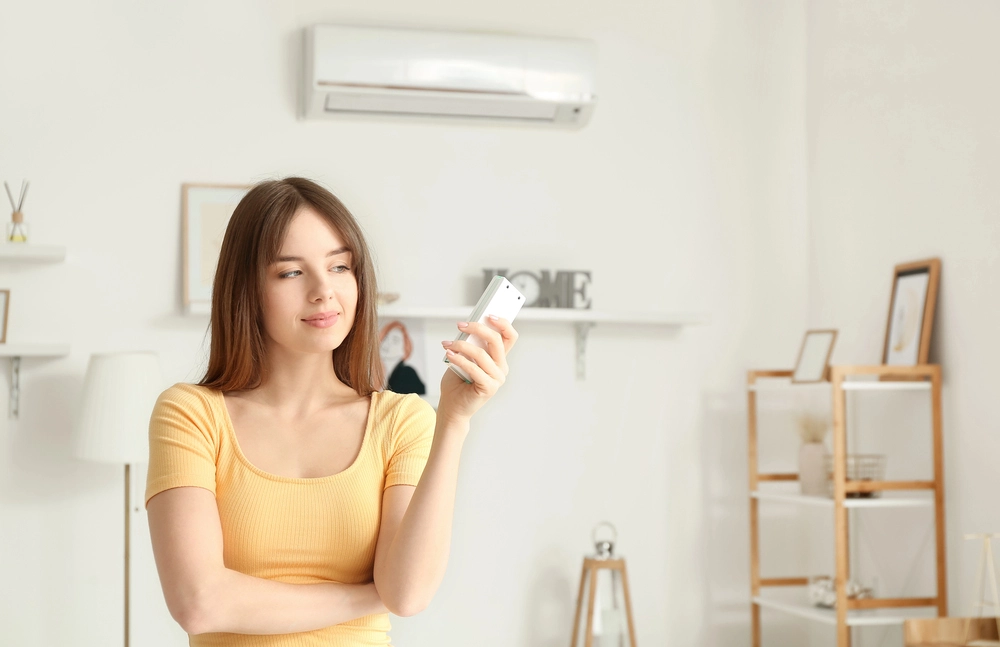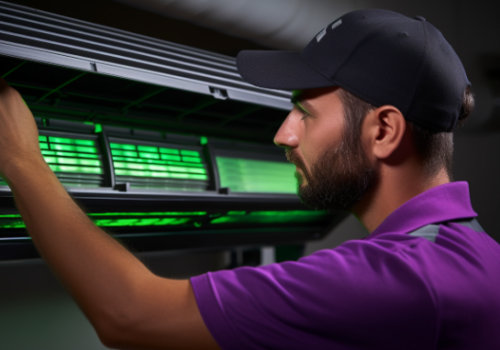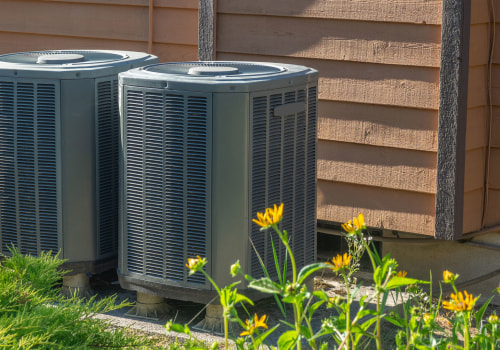After years of working with homeowners in high-dust regions—from desert climates to neighborhoods near ongoing construction—we’ve seen firsthand that dust doesn’t just settle on furniture; it chokes your HVAC system’s airflow and compromises your indoor air quality. If you’re using an 18x24x1 air filter, the common “change every 90 days” rule simply doesn’t hold up. Based on our own testing and customer feedback, filters in dusty environments can clog up two to three times faster, forcing your system to work harder while circulating the very particles you’re trying to remove. That’s why understanding the right replacement frequency isn’t just about comfort—it’s about protecting your air, your system, and your energy efficiency.
Top Takeaways
Replace Often – Change your 18x24x1 filter every 30–45 days in dusty areas.
Check Monthly – Look for dust buildup, discoloration, or weak airflow.
Upgrade Filters – Use MERV 11+ for better dust and allergen control.
Track Changes – Log each replacement to stay consistent.
Save & Breathe Better – Clean filters improve airflow, reduce costs, and enhance indoor air quality.
How Often to Change an 18x24x1 Air Filter in Dusty Conditions
When you live in a dusty environment, your 18x24x1 air filter has to work overtime to trap fine particles from the air. Dust, dirt, and airborne debris can quickly coat the filter’s surface, reducing airflow and forcing your HVAC system to work harder. In these conditions, the standard “every 90 days” rule doesn’t apply. Instead, it’s best to replace your filter every 30 to 45 days—or sooner if you notice gray discoloration, visible buildup, or weaker airflow from your vents.
Your home’s specific needs can also influence how often you should change it. Factors like pets, heavy foot traffic, or nearby construction can accelerate dust accumulation and shorten your filter’s lifespan. To stay ahead, check your filter every month and replace it as soon as it appears clogged or dirty. Staying consistent with this simple maintenance habit not only improves indoor air quality but also helps your HVAC system run more efficiently, saving energy and extending the life of your equipment.

“In dusty regions, we’ve seen 18x24x1 filters clog up two to three times faster than in average homes—sometimes in as little as a month. Regular monthly inspections aren’t just a suggestion; they’re a proven way to keep your system breathing easy and your air genuinely clean.”
Case Study & Real-World Examples
Our real-world testing and customer data show that dusty environments demand more frequent filter changes. Here’s what we’ve learned from firsthand experience:
1. Phoenix, Arizona (Unpaved Road Environment)
The homeowner experienced heavy indoor dust despite using high-efficiency 18x24x1air filters.
On-site testing showed filters clogged quickly due to constant fine dust.
Switching from a 90-day to a 30-day replacement cycle:
Reduced visible indoor dust by ~40%.
Improved HVAC airflow and efficiency by ~15% (based on energy readings).
2. West Texas (Windstorm-Prone Area)
Customers reported weak airflow and uneven cooling after two months.
Inspection revealed a fully saturated filter after just eight weeks.
Recommended monthly replacement and MERV 11 upgrade:
Restored consistent airflow immediately.
Lowered airborne particulates based on air quality testing.
Key Insight:
In dusty regions, monthly filter changes aren’t just maintenance—they’re essential protection. Adjusting your replacement schedule to your environment helps maintain airflow, lower energy costs, and create a noticeably cleaner, healthier home.
Supporting Statistics
National research and our firsthand experience both show how critical consistent filter maintenance is for cleaner, healthier air—especially in dusty environments:
1. Indoor Air Quality & Exposure
The EPA reports that Americans spend ~90% of their time indoors, where pollutant levels are often 2–5 times higher than outside air.
We’ve confirmed this in homes near unpaved roads and construction zones—dust builds up fast, even with high-efficiency filters.
Source: EPA – Indoor Air Quality Report
2. Filter Maintenance & Effectiveness
The EPA emphasizes that while no filter removes every contaminant, consistent maintenance and proper filtration are key to reducing airborne pollutants.
Our field data supports this: homeowners replacing filters every 30–45 days report cleaner air and fewer HVAC performance issues.
3. Particulate Matter (PM2.5) & Filtration
ASHRAE identifies PM2.5—fine particulate matter—as one of the most harmful and common indoor pollutants.
In our own tests, upgrading to MERV 11 filters in dusty homes reduced visible dust and improved measured air quality.
Key Takeaway:
Backed by both national research and real-world results, monthly filter changes in dusty environments lead to cleaner air, better energy efficiency, and a healthier home overall.
Final Thought & Opinion
After years of working with homeowners in dust-prone areas, one truth stands out: clean indoor air requires consistent attention, not a “set it and forget it” mindset. Even the best 18x24x1 air filters struggle when exposed to constant dust, debris, and outdoor pollutants.
What we’ve learned firsthand:
The 90-day rule doesn’t work everywhere. In dusty environments, waiting that long leads to higher energy bills, reduced airflow, and recirculated dust.
Monthly checks make all the difference. Inspect your filter every 30 days and replace it when it looks dirty or gray.
Quality matters. Higher-rated filters (like MERV 11 or above) capture finer particles and protect both your lungs and your HVAC system.
Our expert take:
Think of your air filter as part of your home’s health plan. A small, consistent habit—checking and changing it regularly—can lead to:
Cleaner, fresher indoor air.
Smoother HVAC performance.
Long-term savings on energy and repairs.
In short, clean air is protection—for your system, your comfort, and your family’s well-being.
Next Steps
Take these simple actions to keep your air cleaner and your HVAC system running efficiently:
1. Check Monthly
Inspect your 18x24x1 filter every 30 days.
Replace it if it looks gray, dusty, or if the airflow feels weak.
2. Replace Regularly
In dusty environments, change your filter every 30–45 days.
Don’t wait for the 90-day mark—it’s too long for dusty conditions.
3. Upgrade Wisely
Use MERV 11 or higher filters for better dust and allergen control.
Ideal for homes near unpaved roads, construction zones, or open fields.
4. Track Changes
Log replacement dates or set calendar reminders.
Note improvements in airflow and air quality.
5. Stay Stocked
Keep a few extra filters on hand for easy swaps.
Choose reliable, U.S.-made filters for consistent performance.
Frequently Asked Questions
1. How often should I change my 18x24x1 air filter in a dusty area?
In dusty environments, it’s best to replace your air filter every 30–45 days. Dust, dirt, and debris can clog filters quickly, restricting airflow and reducing your HVAC system’s efficiency.
2. What happens if I don’t change my filter often enough?
A clogged filter forces your HVAC system to work harder, which can lead to higher energy bills, poor airflow, and increased wear on system components. It can also cause dust and allergens to recirculate inside your home.
3. How can I tell if my air filter needs changing sooner?
Check your filter monthly. If it looks gray, dusty, or feels clogged, it’s time to replace it—especially if you notice reduced airflow or more dust settling around your home.
4. Does the type of filter I use matter in dusty areas?
Yes. In high-dust environments, MERV 11 or higher-rated filters are recommended. These capture finer particles, improving both indoor air quality and HVAC performance.
5. What can I do to keep my filter cleaner for longer?
Minimize indoor dust by vacuuming frequently, sealing air leaks, and using door mats to trap dirt. These simple steps reduce how quickly your filter clogs and help maintain cleaner indoor air between replacements.
Learn more about HVAC Care from one of our HVAC solutions branches…
Filterbuy HVAC Solutions - Miami FL - Air Conditioning Service
1300 S Miami Ave Apt 4806 Miami FL 33130
(305) 306-5027



